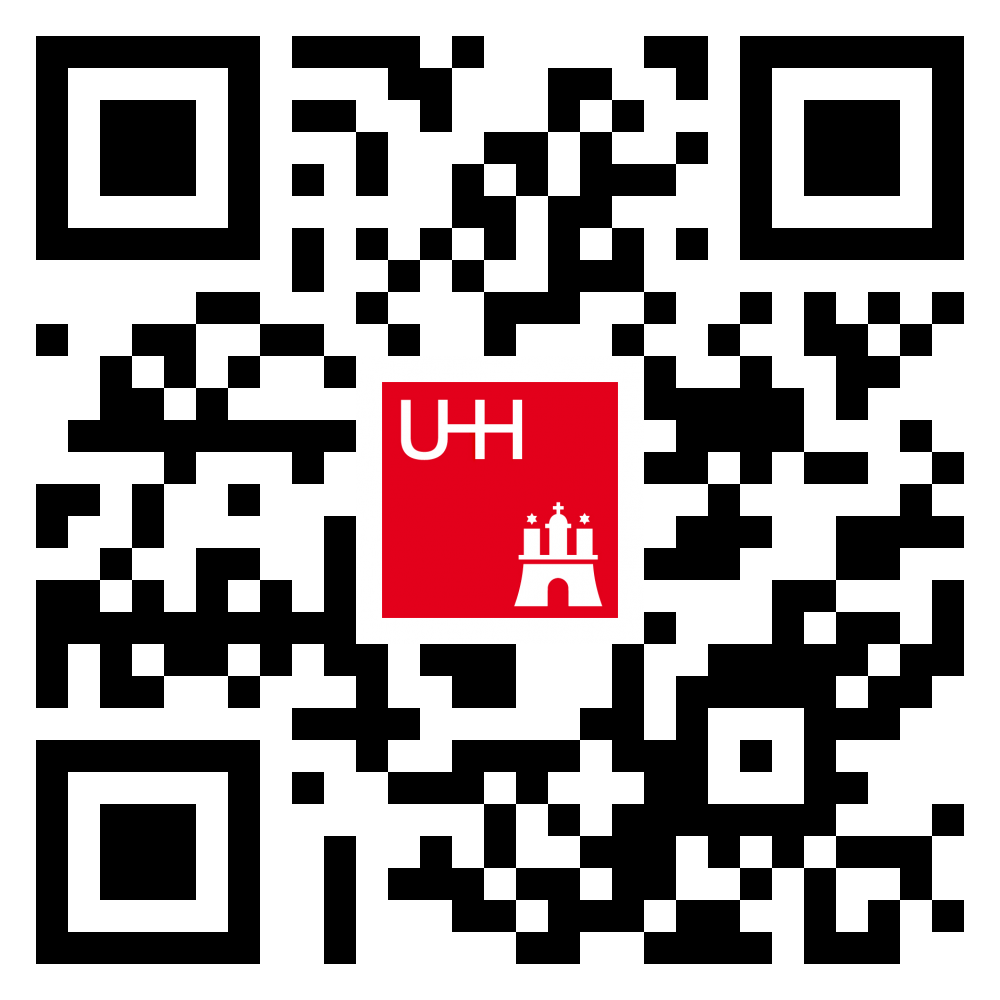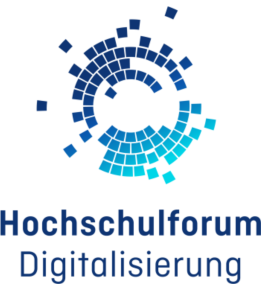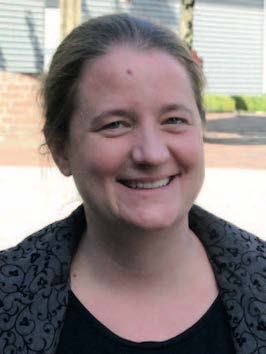Sustainability digital – A guest article by Peter England & Stefanie Brunner
Sustainability digital – A guest article by Peter England & Stefanie Brunner
16.07.19
“Digitisation’ serves only as a ‘door opener’, as a Trojan horse in the best sense of the word, in order to fundamentally question old habits and old forms of learning.” A guest article by Peter England and Stefanie Brunner from eCult about digital sustainability.
This article has already been published in: Synergie. Fachmagazin für Digitalisierung in der Lehre #07, (pp. 26 – 29). We would like to thank Synergie, the journal for digitization of the University of Hamburg, for providing this article and for the permission of a republication.
This article was automatically translated using DeepL Translator. Please excuse any errors.
![Sustainable digital - digital sustainable. Foto: [https://unsplash.com/photos/7e2pe9wjL9M Riccardo Annandale] Learn digital sustainability](/sites/default/files/images/blog/riccardo-annandale-7e2pe9wjL9M-unsplash.jpg)
This article has already been published in: Synergy. Specialist magazine for digitization in teaching #07, (p. 26 – 29).
Good news
We live in uncertain times. Why “good”? In uncertain times, there is a greater chance of fundamentally questioning existing structures and giving something new room for development. The reason for this is what is often called “digitalisation”, “digital transformation” (Strobel & Welpe 2017), “digital age” (Schünemann & Budde 2018) or “digitality” (Stalder 2018). In these years, the first students come to universities that do not know a time without the Internet. They encounter structures that were formed in other times.
When something new emerges and calls old things into question, this initially leads to uncertainty. In uncertain times, therefore, interest in fixed frameworks, strategies and sustainability is always particularly high. People are looking for security. The other side of the coin: something new offers freedom. The use of digital media for teaching and learning offers the opportunity to think fundamentally about how people want to learn and how they can learn well. One question is therefore: What structures and institutional framework conditions are needed for sustainable digitisation in teaching?
Sustainability – does it have to be?
Digitisation in teaching? In other words, learning with new media. But “new media” have existed for a long time. What is “new” depends on the spirit of the times. Digitisation is no exception, but an additional means of transport. When people wanted to get from A to B, they first used their feet, later their horse, the train or the car. The “new” was added, not replacing the “old”. The variety increased. The purpose remained constant: transport.![Sustainability leads to the top. Foto: [https://unsplash.com/photos/qagffGnpeSs Josè Maria Sava] Climb to the top!](/sites/default/files/images/blog/jose-maria-sava-qagffGnpeSs-unsplash.jpg)
This also applies to information: Vehicles are a means to an end. If education is the goal, the means were initially language, myths and fairy tales, oral traditions that were later supplemented by writings. Papyrus, paper, books were and are information carriers. A means to the end of the information transfer between A and B. Just a medium. Further “new media” were added: in the 19th century the first photographs, moving images, cinema as a mass medium. Later transmissions by radio waves for hearing and seeing. Now digital: the Internet has been in use as a means of transport since about 1990. It was added in order to increase diversity, not to replace it.
So “digitization” is not the answer, especially not to all educational questions. Neither was the book, the Telekolleg or computer-based training. It is still true that the focus must be on education (Kerres 2001). “Digitalization” serves merely as a door opener, a Trojan horse in the best sense of the word, to fundamentally question old habits and old forms of learning. Times have never been better for thinking about learning at universities and finding good solutions, both digital and non-digital. Good solutions that are sustainable.
“Sustainability” has a temporal dimension: the question of sustainability only arises if one assumes that there is something today that should also exist tomorrow. Was the question asked at the time how to ensure the transport of people “sustainably” with horse-drawn carriages? But even more horse-drawn carriages got stuck in the rainy loam soils – and in a sustainable way. More of the same has never been sustainable. The answer lay outside known solutions: on rails.
“Sustainability” has a normative dimension: Very often something should be “sustainable”. From should to be? As if “staying” were a value in itself. In a world in which information can be copied as often as you like, this seems like an anachronism. In digital times, can sustainability mean placing a monolithic block in the landscape that outlasts time? Do we need solid structures and buildings? Libraries should be preserved, shouldn’t they? After all, they make books available for learning in a sustainable way. Ever since papyrus was imported from the Phoenician city “Byblos”. That was a long time ago.
And what do digital times demand? Is it about the question: How do we preserve digital media? The sustainability debate as a rescue parachute? That is not necessary at all. Because with a finger swipe of technological development – Latin: “digitus”, the finger – they are already replaced. Seriously: Sustainability – does it have to be? Can that really work?
Analog: Has the question ever been raised as to how learning with books can be implemented sustainably at universities? Thanks to Gutenberg and movable letters, books were omnipresent at some point. Soon everyone had one. The trend was towards the second book. Bring your own device. The promise associated with it: new freedom, enlightenment, equal access to knowledge resources, equal opportunities, social advancement, individuality. This caused conventional structures and institutions to waver.
It cannot therefore be about “preservation”, but about constant renewal. What is sustainable is what develops further, remains flexible and can adapt to changing environmental conditions. Sounds logical? But all too often “sustainability” is once again understood to mean something very rigid: Steady development of positions from project funds. Or the sustainable anchoring of certain digital media. But the big chance of “digitisation” is: individualised and adaptable offers that fit into the learning environment of the students. So the relevant question is not sustainability, but demand: Which media do students use to learn? How do they learn? What do they need to learn well?
This is the paradigm shift in the digital age: roll-in instead of roll-out (Sprenger 2018, p. 37 f): Don’t look at what tools you have on offer, but see what learners want. This can be very individual in view of the increasingly heterogeneous student body (Stöter 2014). “One size fits all” no longer works (e.g. for e-exams, Getto 2018). That is why the focus should be on people and their educational concerns. Not the technology. From having to being (Erich Fromm 1976, 1989). Digitization is not a technical revolution, but a cultural one. Form follows function. Technology follows culture!
Innovations prevail because they bring a real advantage to the user, for example freedom, mobility, mobility. With the conversion of analogue into digital data the additional possibility arose to change them. Centralized transport of information (“one to many”) is the industrial age, self-determined knowledge acquisition is the digital age. The possibility of individual authorship is a consequence. Not rigid structures, but new mobility (“everyone to many”).
Inner mobility
If self-determination is not a skill, but a fundamental characteristic of learning (Schmitt 2018), then the answer can only be that: Let them do it! Create a reliable framework, yes, but sustainable digitisation in teaching does not need rigid structures. In order to enable education in the sense of maximum development capability (Lotter 2017), the core of sustainability is then inner mobility.
And this is exactly what we are doing here: this article is the framework. No more and no less. No knowledge transfer, no fixed structures, but inner mobility, made possible by digital media. So that this edition of Synergy can also be used sustainably. Have a look what others think about it:

Internal mobility applies equally to media, learning spaces (Willenbrock 2014) and people: “We need learning environments that can be creatively visited by diverse user groups in a decentralised and multiform manner; learning modules that are neither bound by the need to be present nor by time constraints; content that can be expanded and networked by the learners; fellow human beings who see themselves as constantly learning more”. (Laurencon & Wagner 2018, p. 47). If digitisation projects at universities are to be successful, they must serve at least one of these goals. Create mobility! Learning spaces are free spaces.
Resistance is pointless![Teaching sustainability - learning sustainability. Foto: [https://unsplash.com/photos/r9T0LZv8xWQ Jon Tyson] Jump forward!](/sites/default/files/images/blog/jon-tyson-r9T0LZv8xWQ-unsplash.jpg)
Is that all? Don’t we have to intervene, regulate, control? Better not. After all, many digital assistance systems, learning management systems, personal learning environments (PLE) and others fail precisely because they prescribe too many learning paths (Grell 2018). On top of that, an oxymoron par excellence: you can’t even prescribe learning paths, not even digitally. Learning is a path that emerges while walking – and learners have to walk it themselves. In the digital age, are we so far advanced that we can accept this?
Another objection: Why should we implement digital media in our studies and teaching in a sustainable way if it is not yet clear whether they really make teaching and learning better? In fact, there are no findings on this (Mayrberger 2016, p. 38). But seriously: Who assumed that with the use of digital media, the fundamentals of didactics would suddenly no longer apply? Of course, it will continue to depend on how new – and old – media are used. That depends much more on the people involved than on the media (Petko 2014, p. 109).
What is new, however, is that teachers are no longer the only point of reference for passing on information; knowledge can also be acquired elsewhere. Through the “digital” there is much more freedom – when and where with which medium one learns. Shift from teaching to learning (Reinmann 2018). The variety at the buffet of learning has increased. This does not taste good to everyone and inevitably leads to resistance. However: Nobody has to change the teaching completely to virtual. Nobody has to do “digital teaching” on top (Goertz 2018). Somehow reassuring, too. We are currently experiencing the change from “e-learning” to “learning”. The “E” is nothing special anymore.
Students use digital media as a matter of course. The question is: For what? For exam preparation. To pass an exam. As a means to an end. So only fictitious freedom after all? Does the use of digital media promote learning with bulimia (Marx 2019)? But Ludditen doesn’t help (Lotter 2013). It is not the medium against which criticism can be directed. Or does someone come up with the idea of accusing the “books” of being used by students for memorizing them? And no one would seriously claim that artificial intelligence systems adapt to individual learning speeds, but textbooks don’t (Dräger 2013).
Sustainable implementation of digitisation in teaching is not sustainable implementation of digital media. The order is decisive (Sprenger 2018, p. 38): first the students, then the organisation and staff, then the technology. Not the other way around. This requires inner flexibility. Put people and their needs at the centre and solve their educational problems. That we (also) do this with digital media is simply normal at this time.
It’s your (digital) turn!
This normality on the Internet also includes the ability to comment on a read article. Why not use such a comment function for paper magazines as well? Therefore: Here is the link you use. Post your opinion on the topic on the Blog der Synergie! You decide how sustainable this magazine will be.
Epilog
Steffi: “And what should people post then?”
Peter: “Just let them do it.”
Steffi: “I can’t stand it.”
Peter: “Yes.”
Literature
Dräger, J. (2013). Maßgeschneiderte Vorlesungen für alle. Verfügbar unter: https://uhh.de/g326e [11.02.2019].
Fromm, E. (1976). Haben oder Sein. Die seelischen Grundlagen einer neuen Gesellschaft. Stuttgart: Deutsche Verlags-Anstalt.
Fromm, E. (1989). Vom Haben zum Sein: Wege und Irrwege der Selbsterfahrung. Die Deutsche Bibliothek.
Getto, B. (2018). Hochschuleigene Diversity-Strategie – Digitalisierung als Schlüssel zur Individualisierung der Lehre; Interview auf Hochschulforum Digitalisierung. Verfügbar unter: https://uhh.de/wkqah [11.02.2019].
Goertz, L. (2018). Herausforderungen: Welche Hindernisse erschweren den Einsatz digitalen Lernens? Verfügbar unter: https://uhh.de/w2z3l[11.02.2019].
Grell, P. (2018). Digitale Assistenzsysteme in der Hochschullehre. Bildungstheoretische Perspektiven. Keynote Campus Innovation Hamburg 2018. Verfügbar unter: https://uhh.de/ktzpy [11.02.2019].
Kerres, M. (2001). Multimediale und telemediale Lernumgebungen: Konzeption und Entwicklung. München, Wien: Oldenbourg Wissenschaftsverlag.
Laurencon, A. & Wagner, A. C. (2018). B(u)ildung 4.0: Wissen in Zeiten technologischer Reproduzierbarkeit. Berlin: FrolleinFlow House.
Lotter, W. (2013). Volles Programm. brand eins, Schwerpunkt Fortschritt wagen (7). Verfügbar unter: https://uhh.de/s3cvr [11.02.2019].
Lotter, W. (2017). Der Entwicklungshelfer. brand eins, Schwerpunkt Lernen (09). Verfügbar unter: https://uhh.de/cd3xs [11.02.2019].
Marx, U. (2019). Mathe-Nachhilfe auf Youtube: „Das ist Bulimielernen, aber keine Bildung“. Interview mit Prof. Dr. Matthias Ludwig, Frankfurter Allgemeine (Online-Ausgabe). Verfügbar unter: https://uhh.de/i2tlr [11.02.2019].
Mayrberger, K. (2016). Digitalisierung von Lehren und Lernen…oder warum die Frage nach einem Mehrwert von E-Learning obsolet geworden ist.nexus-Tagungsband: Digitale Lehrformen für ein studierendenzentriertes und kompetenzorientiertes Studium. Eine Tagung des Projekts nexus in Zusammenarbeit mit dem Center für Digitale Systeme (CeDiS) der Freien Universität Berlin; S. 35 – 45. Verfügbar unter: https://uhh.de/az3xy [11.02.2019].
Petko, D. (2014). Einführung in die Mediendidaktik. Lehren und Lernen mit digitalen Medien. Weinheim: Beltz.
Reinmann, G. (2018). Shift from Teaching to Learning und Constructive Alignment: zwei hochschuldidaktische Leitlinien auf dem Prüfstand. Vortrag zum Auftakt zur Vortragsreihe Hochschuldidaktik, Freie Universität Berlin. Verfügbar unter: https://uhh.de/z8lkj [11.02.2019].
Schmitt, C. (2018). Bitte lernen lassen. Danke. Verfügbar unter: https://uhh.de/z4c8v [11.02.2019].
Schünemann, I. & Budde, J. (2018). Hochschulstrategien für Lehre im digitalen Zeitalter. hochschulforum digitalisierung, Arbeitspapier Nr. 38. Verfügbar unter: https://uhh.de/5sucx [11.02.2019].
Sprenger, R. K. (2018). Radikal digital: Weil der Mensch den Unterschied macht – 111 Führungsrezepte. München: Deutsche Verlags-Anstalt.
Stalder, F. (2018). Herausforderungen der Digitalität jenseits der Technologie. Synergie. Fachmagazin für Digitalisierung in der Lehre (5), S. 8 – 15. Verfügbar unter: https://uhh.de/kjeog [11.02.2019].
Stöter, J. (2014). Acceptance of Digital Learning Tools in the Context of Non-Traditional Students. Presented at the 2014 EDEN Annual Conference, Zagreb, Croatia. Verfügbar unter: https://uhh.de/f5jxe [11.02.2019].
Strobel, M. & Welpe, I. M. (2017). Hochschule 4.0. Die Zukunft der Hochschule erfinden. Wirtschaft und Wissenschaft (4), S. 316 – 318.
Willenbrock, H. (2014). Die stille Botschaft der Räume. brand eins, Schwerpunkt Konzentration (4). Verfügbar unter: https://uhh.de/6nk4o[11.02.2019].
DOI
10.25592/issn2509-3096.007.004
Opinions on the topic in the synergy blog
Post as Podcast
CC BY-NC-SA 4.0


